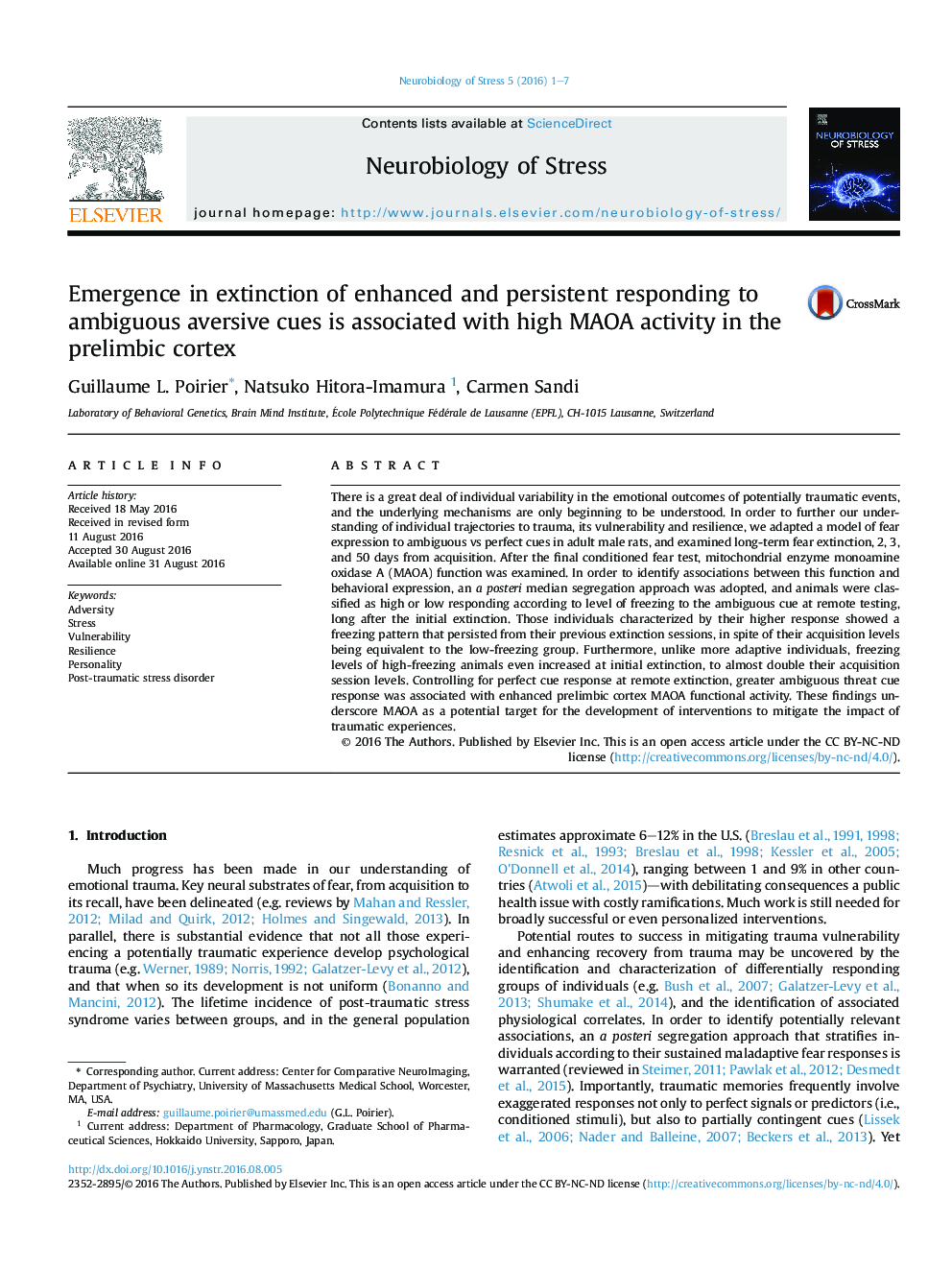| کد مقاله | کد نشریه | سال انتشار | مقاله انگلیسی | نسخه تمام متن |
|---|---|---|---|---|
| 4318509 | 1613194 | 2016 | 7 صفحه PDF | دانلود رایگان |
• Potentially traumatic event outcomes vary and mechanisms are poorly understood.
• We examined fear extinction of perfect or ambiguous cues in adult male rats.
• Higher freezing to ambiguous cue in extinction yet followed equivalent acquisition.
• Ambiguous cue response was associated with higher prelimbic cortex MAOA function.
• These findings support targeting MAOA to mitigate impact of traumatic experiences.
There is a great deal of individual variability in the emotional outcomes of potentially traumatic events, and the underlying mechanisms are only beginning to be understood. In order to further our understanding of individual trajectories to trauma, its vulnerability and resilience, we adapted a model of fear expression to ambiguous vs perfect cues in adult male rats, and examined long-term fear extinction, 2, 3, and 50 days from acquisition. After the final conditioned fear test, mitochondrial enzyme monoamine oxidase A (MAOA) function was examined. In order to identify associations between this function and behavioral expression, an a posteri median segregation approach was adopted, and animals were classified as high or low responding according to level of freezing to the ambiguous cue at remote testing, long after the initial extinction. Those individuals characterized by their higher response showed a freezing pattern that persisted from their previous extinction sessions, in spite of their acquisition levels being equivalent to the low-freezing group. Furthermore, unlike more adaptive individuals, freezing levels of high-freezing animals even increased at initial extinction, to almost double their acquisition session levels. Controlling for perfect cue response at remote extinction, greater ambiguous threat cue response was associated with enhanced prelimbic cortex MAOA functional activity. These findings underscore MAOA as a potential target for the development of interventions to mitigate the impact of traumatic experiences.
Journal: Neurobiology of Stress - Volume 5, December 2016, Pages 1–7
